
In these dangerous times of a global health pandemic, there is no better opportunity to teach and reinforce the importance of practicing proper hygiene to the littlest members of our families.
To date, the COVID-19 or Coronavirus has affected thousands all over the world and already by the hundreds in the U.S. It’s a fearful time for everyone especially those of us with older or younger family members. All of us are advised to take all necessary precautions and the world’s most prominent health experts all echo the same advice:

Now, more than ever, is the best time to make sure that the youngest members of our families understand the importance of practicing proper hygiene. It’s not just about being healthy amidst the current pandemic but it’s also to help them avoid other types of viruses and bacteria as well, because cute as they are, your toddler could be carrying more germs and bacteria than you can imagine.
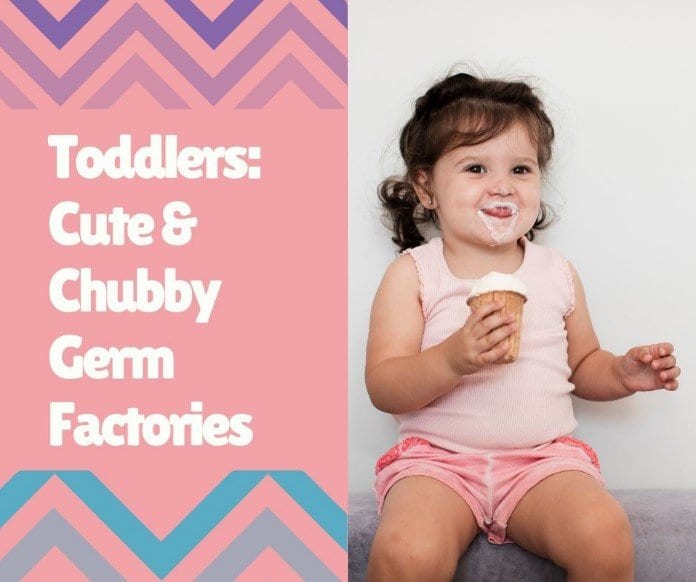
With cheeks so round and a smile so charming – parents love nothing more than to snap hundreds of photos of their funny, cheeky toddlers. Unknowingly, though, as we look at adorable photos of them clutching their favorite toy, playing in the yard or splashing about in the pool, they could be carrying germs that can cause cough, colds, bacterial or viral infections.
Why do toddlers carry so many germs, anyway?
We can think of many reasons why, but let’s stick with the top 3:
1. Toddlers simply love being messy and don’t care about getting their hands dirty!
They love tumbling about in the grass, they love exploring with their hands and fingers in sand boxes, playgrounds, beaches or “helping” mom in the garden. Their curious little hands can then get in contact with viruses and bacteria at any given time.
2. Toddlers aren’t old enough to keep themselves clean.
It’s hard to teach our little tykes to cover their mouths when they sneeze or wipe their snotty noses with clean tissue instead of their shirt sleeves and it’s especially difficult to have them stay away from other sick toddlers in the play area or stop them from hugging their best friend in day care, who may also be feeling a little under the weather.
They also mindlessly go potty without thinking of washing their hands! And have you tried teaching your 2-year-old to brush their teeth? If you have, well you know it seems impossible.
Yep, being clean is definitely not in a toddler’s to-do list.
3. Toddlers tend to put whatever they find in their mouths.
A days-old dusty Cheerio found under the couch, a shoe, a sock, a pen, a pet’s toy, keys, mom’s phone, dad’s power cord, pretty much anything! According to Robert W. Frenck Jr., MD, professor of pediatrics at the Cincinnati Children’s Hospital Medical Center, “In the first few years of life, babies put everything into their mouths. Absolutely everything.”
In this oral stage that seems to last forever, parents are afraid of health hazards that include choking and, of course, germs and bacteria. However, oral exploration is actually essential to a toddler’s overall development. It’s all part of playing and learning different textures through taste. It can also mean that your toddler’s first tooth is ready to come out.
But, however important the oral stage is to your little one’s development, it still exposes them to germs and bacteria.
Moms and dads of toddlers, cleaning up isn’t your little one’s priority. Their days are spent playing, laughing, exploring and just generally being happy little humans. They couldn’t care less about hygiene. That why it’s our job, as parents, to ensure that they live in a safe and healthy environment.
Toddler Fact:
 If you’re wondering exactly what the age range of a toddler is, per Wikipedia, “a toddler is a child 12 to 36 months old. The toddler years are a time of great cognitive, emotional and social development. The word is derived from “to toddle”, which means to walk unsteadily, like a child of this age.” So, technically, a child who is 4 years old and above is not considered a toddler anymore.
If you’re wondering exactly what the age range of a toddler is, per Wikipedia, “a toddler is a child 12 to 36 months old. The toddler years are a time of great cognitive, emotional and social development. The word is derived from “to toddle”, which means to walk unsteadily, like a child of this age.” So, technically, a child who is 4 years old and above is not considered a toddler anymore.
Since our precocious toddlers don’t care so much for being clean (or staying clean), that doesn’t mean we can’t start teaching them to develop proper hygiene habits.
Why Is It Important For Toddlers Learn Proper Hygiene?
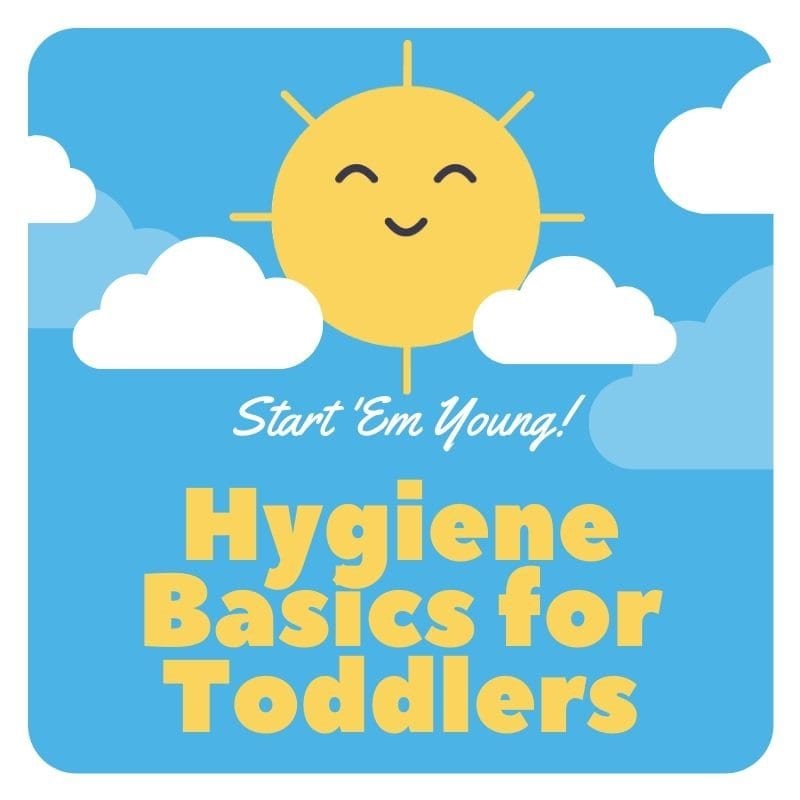
Since they’re so little and a bit more challenging to teach, you may wonder why it’s necessary to let toddlers learn basic hygiene at all. But you’ll be surprised. Toddlers’ minds are like sponges; from the time they were small babies, they curiously observe you as you go about your own hygiene routines: brushing your teeth, washing your hands or face, taking a bath, etc. And you may not know it, but they themselves are learning, as well.
As they enter their toddler years, they should be eager to follow exactly what you’re doing!
And that’s precisely why this is the perfect time to introduce good hygiene habits. Toddlers learn really fast and they develop at an unbelievable rate. Teaching them proper hygiene practices early on will ensure that they will carry these good habits with them as they grow older.
Bottom line: If your 3 year old is accustomed to brushing his teeth every morning, after lunch and before bedtime, then you’ll have an easier time with him when he become 5 years old and headed to Kindergarten. You’ll save tons of time repeatedly asking him to “Go brush your teeth! We’ll be late!” because he has developed these habits when he was younger.
According to Nichole M. Turmelle, a supervisor of occupational therapy at the Children’s Specialized Hospital in New Jersey, your toddler should be ready to do the following basic hygiene activities at the following ages:
| Age | Hygiene Activity |
| 2 to 2 ½ years old | Wash hands without assistance |
| 3 to 3 ½ years old | Bathe with assistance |
| 4 to 5 years old | Bathe independently |
| 3 ½ to 4 years old | Brush their teeth independently |
| 3 to 3 ½ years old | Put a comb to their hair |
| 4 to 4 ½ years old | Thoroughly brush their hair |
But you shouldn’t be worried if your toddler doesn’t follow the above timeline. Children progress differently at different rates. The important thing is to help them learn the following hygiene basics that’s ideal for parents to introduce to their littles ones at about 1 to 1 ½ years old:
Taking A Bath
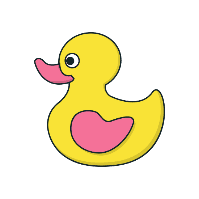 Some toddlers hate it, some love it! Some cheeky little ones need a bit of bribery and promises of treats, while some water-loving babies promptly drop what they were doing and head to the bathroom. Regardless, bath time is an essential hygiene activity and one that parents should help introduce to their little ones as part of their hygiene routines as early as possible.
Some toddlers hate it, some love it! Some cheeky little ones need a bit of bribery and promises of treats, while some water-loving babies promptly drop what they were doing and head to the bathroom. Regardless, bath time is an essential hygiene activity and one that parents should help introduce to their little ones as part of their hygiene routines as early as possible.
Easily make bath time a part of their daily routine by:
- Ensuring bath time happens at the same times – mornings and a quick warm bath before bedtime.
- When they are ready, break bath time down into smaller, more “learnable” pieces such as first learning how to wash their hands, arms, legs or other parts of their body that they can see and then slowly progressing to their hair, armpits, etc.
- Make them look forward to bath time by providing colorful toys, getting in the tub with them or with attractive bath accessories like a special towel that they can use only during bath time or an occasional bubble bath.
Washing Their Hands
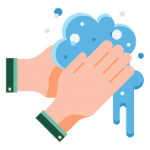 Because the little hands and fingers of a toddler are easily exposed to germs and bacteria, hand washing is an important hygiene activity that should be introduced as early as possible.
Because the little hands and fingers of a toddler are easily exposed to germs and bacteria, hand washing is an important hygiene activity that should be introduced as early as possible.
Hand washing requires patience, repetitive reminders and yes, sometimes us adults forget the importance of hand-washing but, as much as we possibly can, we should do our best to incorporate hand-washing frequently within a toddler’s busy day.
Here’s a quick guide of when you need to make sure your toddler’s hands are washed:

Other instances where you need ensure a toddler’s hands are clean are:
- Before and after they visit the doctor’s office
- Before and after a play date
- Before and after visiting a crowded place like a shopping center, grocery store or theme park.
Not just for toddlers, the above hand-washing guide can also be used for all children in general.
In case you’re out of the house and running water and liquid hand soap isn’t available, hand sanitizer will do. To ensure all dangerous germs and bacteria are killed, wash your toddler’s hands for 20 seconds and air dry or hand rub sanitizer and air dry; don’t leave hands still wet.
In today’s pandemic, doctors encourage double hand-washing which means we are encouraged to still use sanitizer or 60% – 70% alcohol after washing our hands for 20 seconds with soap and water.
Remember that hand-washing can be a family activity which is actually encouraged by the CDC. To ensure that the entire family is healthy and protected, you can use hand-washing as a fun, family activity.
Browse hand sanitizer on Amazon by clicking here!
Brushing Their Teeth
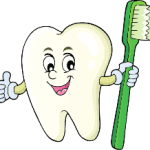 Parents are often advised to clean their babies’ mouth, gums and teeth as early as 3 months old (some even younger) usually with a soft, silicone infant finger-brush. This is to remove any germs and bacteria accumulated by the baby orally via bottle-feeding or even breastfeeding.
Parents are often advised to clean their babies’ mouth, gums and teeth as early as 3 months old (some even younger) usually with a soft, silicone infant finger-brush. This is to remove any germs and bacteria accumulated by the baby orally via bottle-feeding or even breastfeeding.
As they grow older, not only does it ensure healthy gums and teeth, brushing teeth can be a great way to encourage your toddler’s independence. Colorful and creative toothbrushes abound and yummy flavored toothpaste for babies and young kids are available to help motivate little ones to brush their teeth by themselves.
To make it fun, have your toddler listen to children’s songs and nursery rhymes that can be downloaded in your smartphone or tablet. Or, better yet, read them books with stories about brushing their teeth. Either way, both are great ways to reinforce this much-needed hygiene activity.
Combing Their Hair
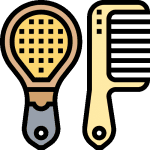 One of the more challenging hygiene activities for younger ones, it’s still important to start teaching toddlers that combing and brushing their hair is an important self-care skill that also teaches them to become independent, as well.
One of the more challenging hygiene activities for younger ones, it’s still important to start teaching toddlers that combing and brushing their hair is an important self-care skill that also teaches them to become independent, as well.
You can break down combing and brushing into small steps by having them brush their bangs first or the sides or the back first. You can then “help” with the rest.
Using the comb and brush properly is also a great way to develop fine motor skills; much needed when they’re final ready for pre-school.
Also, we can’t resist to say: don’t toddlers look extra cute when they’re hair is all brushed properly? They look neat, fresh and clean. Don’t expect too much when they come in from play time, though! They’re back to their usual adorable, messy selves.
Wearing Clean Clothes
While the act of putting on a shirt, pants, socks and shoes are usually mastered beyond toddlerhood (around age 4 or 5 years old), teaching your little one to always wear clean, presentable clothes is a basic hygiene practice.
Having them “help” you with sorting or folding laundry or maybe having them play about your side as you load up dirty clothes in the wash is a great way to let young children learn that clean clothes are also as important as a clean body.
Pointing out when they need to change into clean clothes such as saying out loud “You’re getting stinky! Time to change!” is a great way to let your child know that changing to clean clothes when they’ve gotten a bit too dirty is a basic but important hygiene activity.
Just a few more tips:
Parents will agree that introducing good hygiene habits to toddlers are challenging, to say the least. It requires constant reminder and repeating yourself over and over again that it might be good idea to just record yourself saying “Wash your hands! Brush your teeth! Take a bath! Comb your hair! Change your shirt!” and play it from your phone every time you need to say it. As much as you don’t want to nag, having to remind your 2 year old to “Please wipe your nose with a tissue, don’t use your hands” several times in a day, every single day sounds a lot like nagging.
But be patient, mom and dad.
Studies show that parents with younger children do get sick more often because of their toddlers picking up germs and bacteria everywhere – at school or daycare, in a puddle of stagnant water in the puddle at the playground and on floors at home; you name a place, your child probably picked up an assortment of germs from it.
With time and patience, teaching basic hygiene practices in as early as your child’s toddler years benefits everyone in the family.
Always remember though that we don’t want our little ones to become germophobes or develop anxiety!
We just need to help them understand in clear and fun ways that germs abound and they can help stop from being sick if they do simple things like wash their hands while singing along to their favorite song.
Also remember that germs and getting the occasional cough and cold actually help develop your toddler’s immune system. It’s not a bad thing to get sick from time to time, no matter how clean we try to be.
Here are a few creative ways to encourage young children to keep themselves clean!
Make it visual!
A viral Instagram video from Amanda Lorenzo, Pre-K teacher from the Miami-Dade County Public School district showed young students how a virus can “run away” from clean hands. Involving pepper flakes, water and some liquid hand soap, Amanda used the pepper flakes to represent the virus. When she asked one of her students to dip the tip of her finger in a bowl of liquid hand soap and then touch the pepper flakes, it magically moved away, seemingly “afraid” of clean, soapy finger. It was a great and effective visual activity showing the importance of clean hands that’s reportedly been shared over 130,000 shortly after it was posted. You can follow Amanda or do a quick Google search for other ways to clearly demonstrate the importance of hand-washing, as well.
Make it a game!
You can create bath time or hand washing contests to the tune of “Let’s see who’s get to be the bath time/hand wash princess today! First one to get to the bathroom/sink is a princess!” After bathing and hand-washing, present them with a sash and tiara. You can use fabric glitter glue to write “SUPER CLEAN PRINCESS” on the sash.
Sing along to it!
Many preschools and day care centers play a “clean up” song to encourage little ones to pick up their toys and clean up before going home for the day. You can do the same thing at home during bath time. Playing the same song at the same time encourages bath time to become part of your toddler’s everyday routine.
Make it “Clean Me, Healthy Me” Chart!
You can make your own or look for free printable hygiene charts such as these. Visual aids and colorful pictures/posters help your young toddler remember the important routines that they need to do each day. You can give them small rewards or treats if they’ve completed a certain hygiene activity independently.
As parents, we can help reinforce good hygiene habits by ensuring the following:
- Providing a clean, healthy home that’s disinfected as often as possible.
- Leading by example e.g. showing our little ones that we’re washing our hands or brushing our teeth.
- Making basic hygiene fun and enjoyable to do.
- Reinforcing it every day until it is something that they can do by themselves naturally.
Conclusion
When toddlers are introduced to basic hygiene early on, they bring these habits with them as they grow older. It not only reinforces discipline but also teaches them independence and develop self-care and fine motor skills. Our role as parents is to patiently lead by example and ensure that we remind our young ones every day that being clean helps keep us healthy and strong.
What are your hygiene practices at home? Share them with us!

Leave a Reply